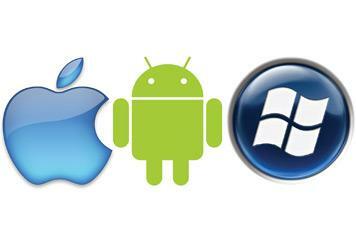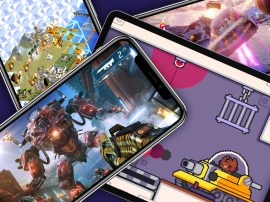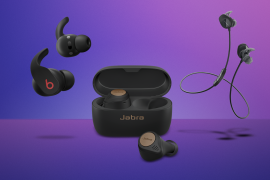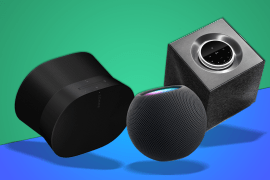Windows Phone 7 vs Android 2.2 vs iOS 4
On the eve of Microsoft’s re-entry to the premier league of smartphone operating systems, is it safe to go back to a mobile running Windows?

On the eve of Microsoft’s re-entry to the premier league of smartphone operating systems, is it safe to go back to a mobile running Windows?
Identity
The newcomer’s tiled screens are a blast of primary blue freshness in a world of artily graded, icon-based homepages. It can be customised by manufacturers and carriers, but ultimately by users, without losing its identity.
Google’s icon-laden OS has replaced Windows Mobile as the manufacturers’ design playground. It’s been skinned and tweaked out of all recognition. Underneath, that identity was always the poor cousin to iPhone OS’s anyway.
It’s the world’s most recognisable smartphone OS (for now). And no one can touch it without putting on his hacking hat and potentially missing out on updates. What can we say? It was an instant classic. And still looks good three years later.
Handsets
No smartphone OS has ever launched with as many handsets as Windows Phone 7. Thanks to the spec commandments sent down from Mount Redmond, they’re all fast and sharp, too.
While many of Android’s past heroes have been left to rot in the outdated OS gutter, Froyo’s device line-up includes the HTC Desire HD and smart tabletware such as Samsung’s Galaxy Tab. But will even they be abandoned with the arrival of Gingerbread, Honeycomb and Ice Cream?
Apple’s phone hardware has led the market since launch, and it continues to dominate with the iPhone 4’s glassy sandwich form. There’s little choice, mind – you can have a 3GS instead, but that’s it.
Tools
Flash 10.1 and cut-and-paste are coming, but early adopters will miss out on these. Not that they should care too much – there’s Zune media, Xbox Live gaming, Bing search, Office Mobile and show-stealing maps.
Froyo’s finally given Android Flash 10.1, the ability to turn handsets into Wi-Fi hotspots out of the box and USB tethering. Not bad, but it relies on third parties for all its music, gaming and social stuff.
No Flash, no tethering, no hotspots… but Apple’s OS makes up for its closed-shop approach to sharing with the best developer base in town (see Apps) and its formidable iPod media player isn’t flagging either.
In use
Microsoft decided against aping the icon-filled screens of its rivals. Instead, it’s aimed for a simpler experience with big, thumbable tiles packed with handy notifications. First impressions score highly.
Of all the OSs here, Android feels the least intuitive. There’s more to play with under the bonnet – great for inveterate tinkerers like us – but it presents a less friendly face to the lay gadgeteer than the other two. Best notifications, mind.
Give a child an iPhone and it’ll have it mastered in seconds. That’s how intuitive Apple’s interface is. True, it could learn a thing or two about notifications from either of the others, but iOS is still the most intiutive mobile operating system.
Apps
Unfair, we hear you cry. Yes, but everyone has to start somewhere and in this case it’s Windows Phone 7, which starts out life with an app cupboard that makes Mother Hubbard’s stash look enviable. History suggests the games and apps will load up quick enough, though.
Blessed with a massive developer community and an open approach to acceptance, the Android Market is huge. It’s also messy and disorganised, making it hard to find the relatively few gems among the massive pile of rubbish, and can’t be searched from a desktop.
When people aren’t about, other smartphones gang up on the iPhone, chanting, “Who ate all the apps?” But it’s just jealousy – iOS supports more apps, has a better store and less dross than any other platform.
The verdict
If we’d actually tallied up scores as we went along, this would be a pretty level tournament. After five gruelling rounds of comparison, we can lazily conclude that Android is the most customisable, iOS has the best apps and Windows Phone 7 has the most pleasing interface. But really what this comes down to is… which one should you get?
You love that new gadget smell and can’t resist the allure of Microsoft’s pretty new interface, despite its barren app market and lack of cut-and-paste. You’ll be rewarded with a rich, useful and slick experience on a choice of top-end hardware. Well done.
Android is a playground for experimentalists, and always gets Google goodies first (like Maps Navigation and Goggles search, for instance). But the Market’s app needles are buried in a haystack full of duds and version updates are limited and often delayed.
Burn your open source ideals and embrace Apple’s sealed-off platform. Not tempted? Despite its insistence on complete control, Apple’s OS is more finished – and more polished – than any other, and plugs into the world’s favourite desktop media client, iTunes.
More from Stuff.tv:
– Palm Pre rides again with HP’s webOS 2.0
– HTC Windows Phone 7 handsets



